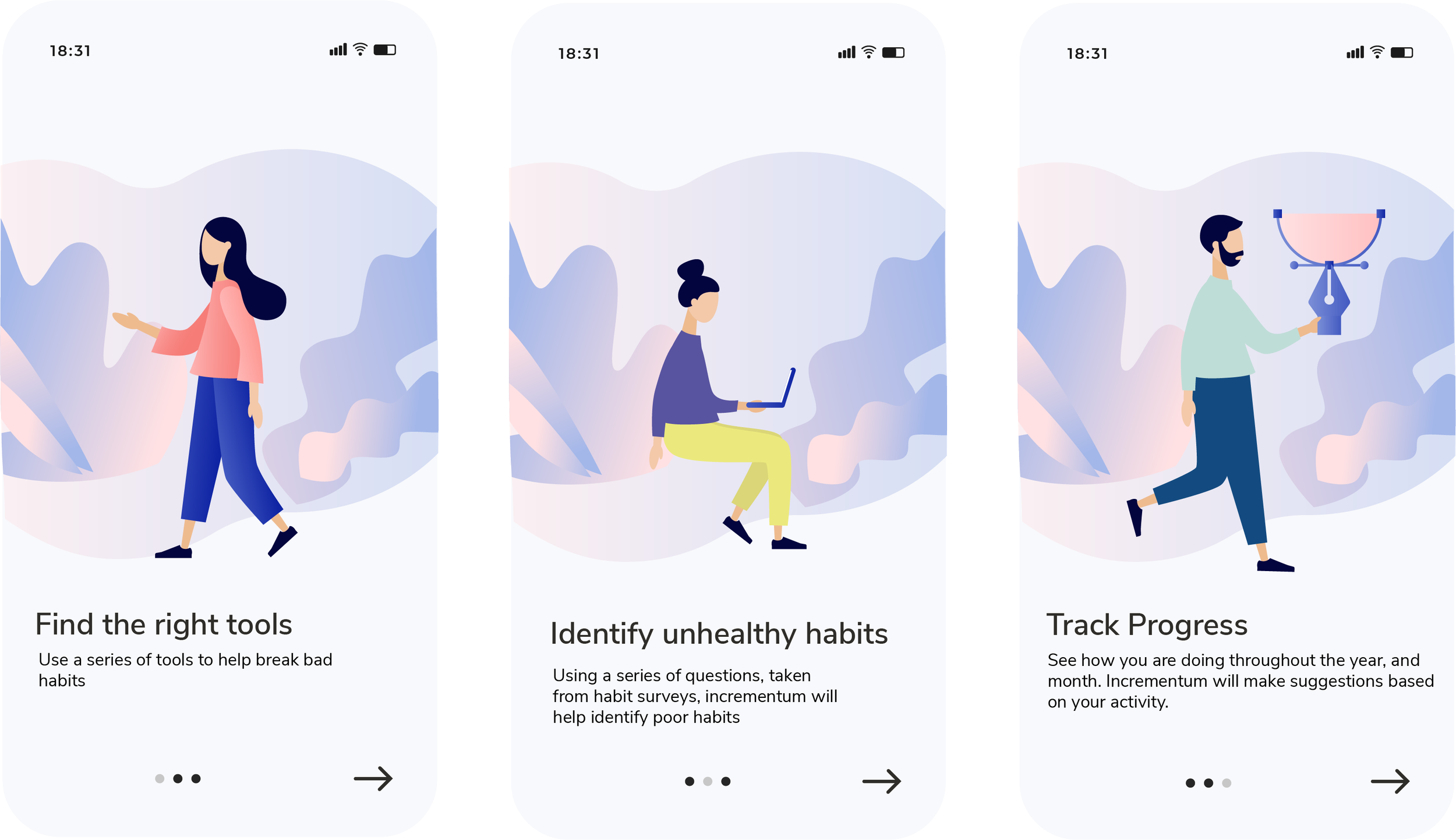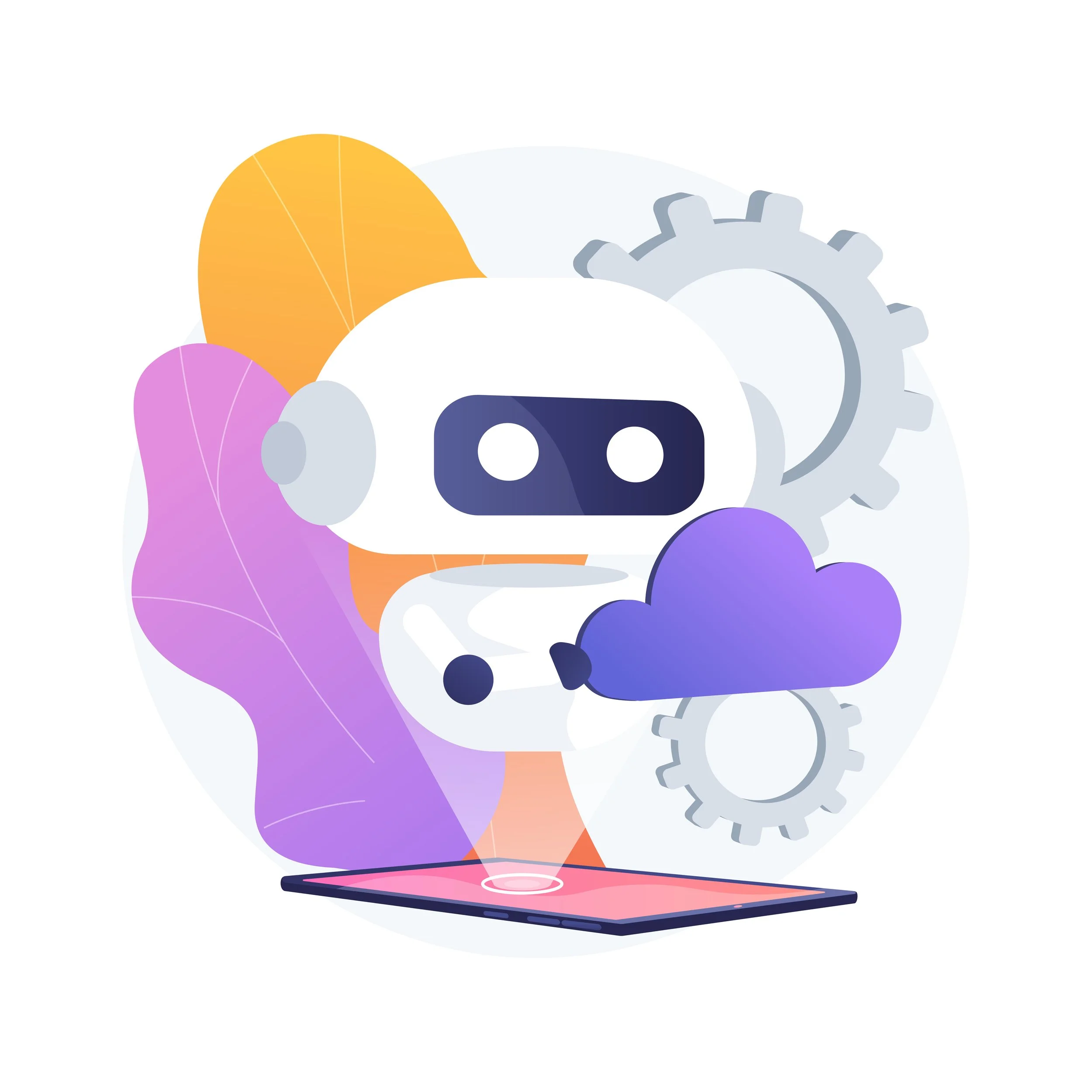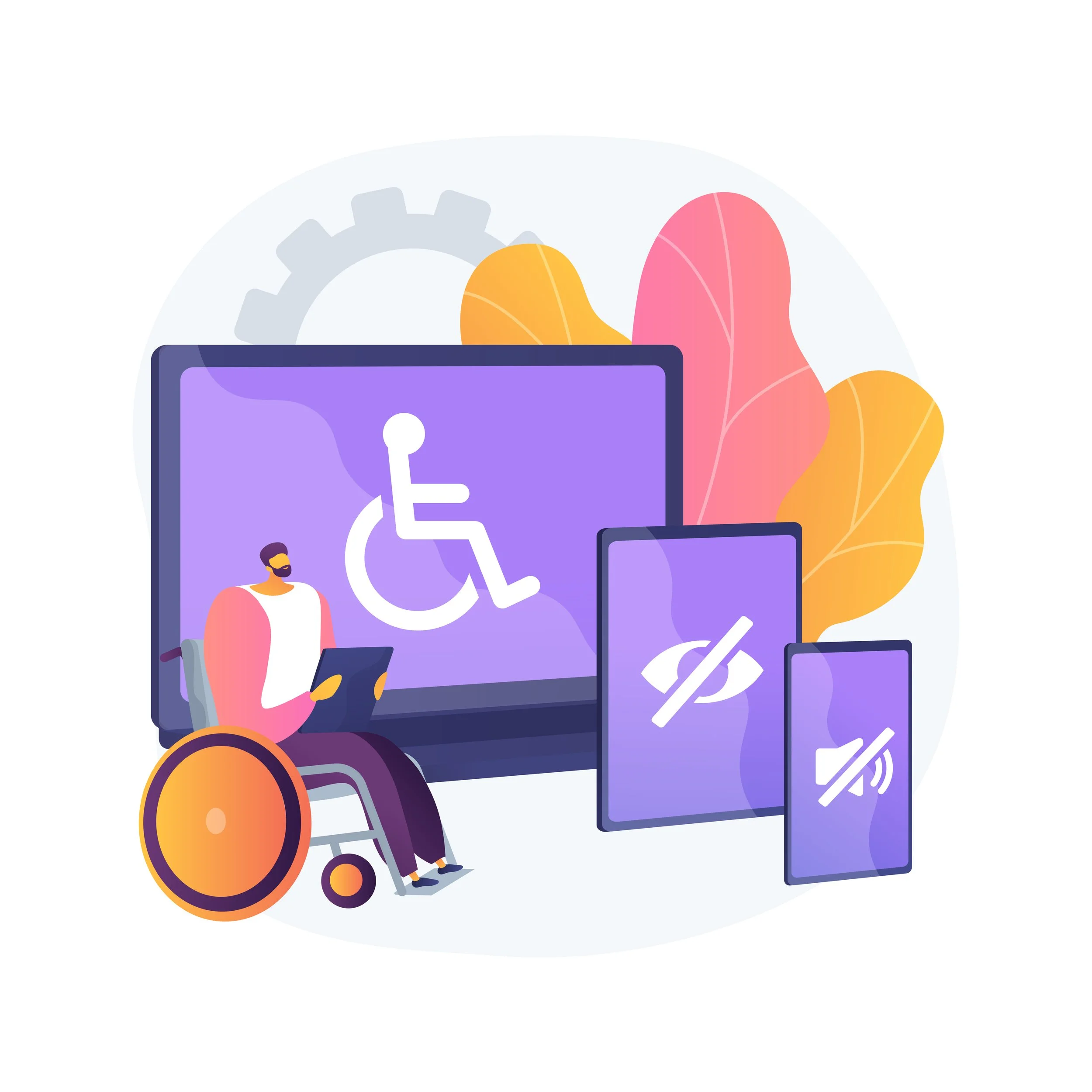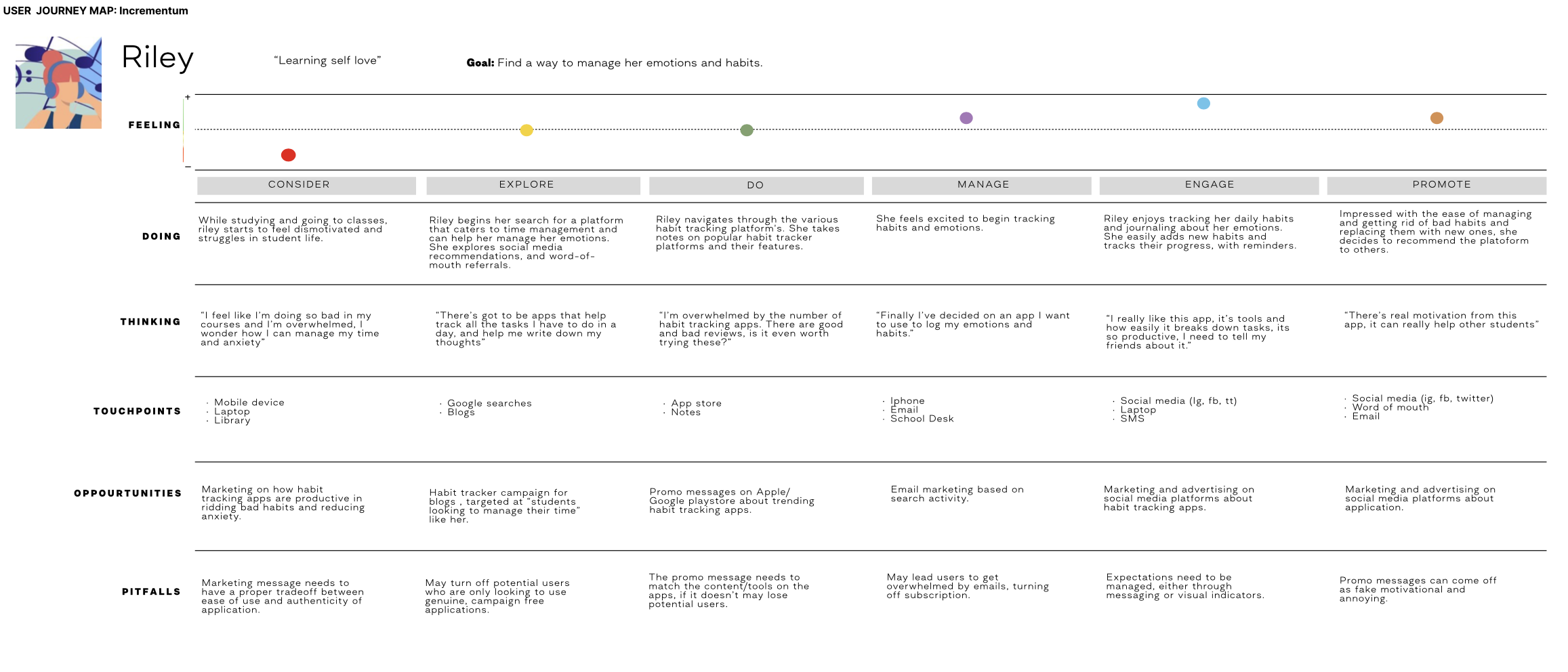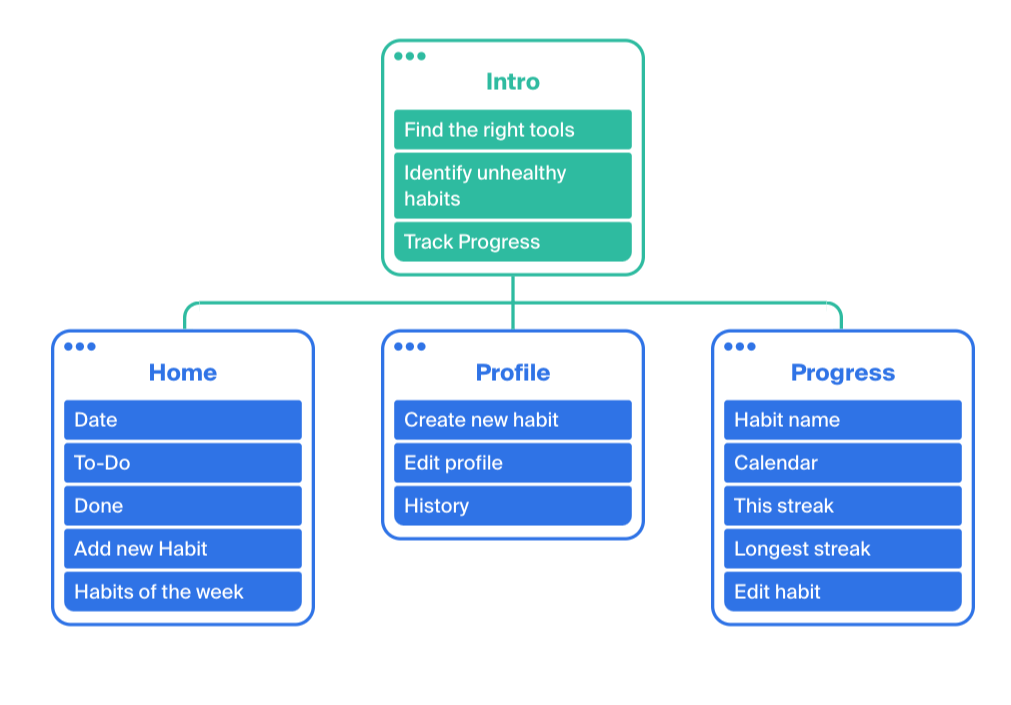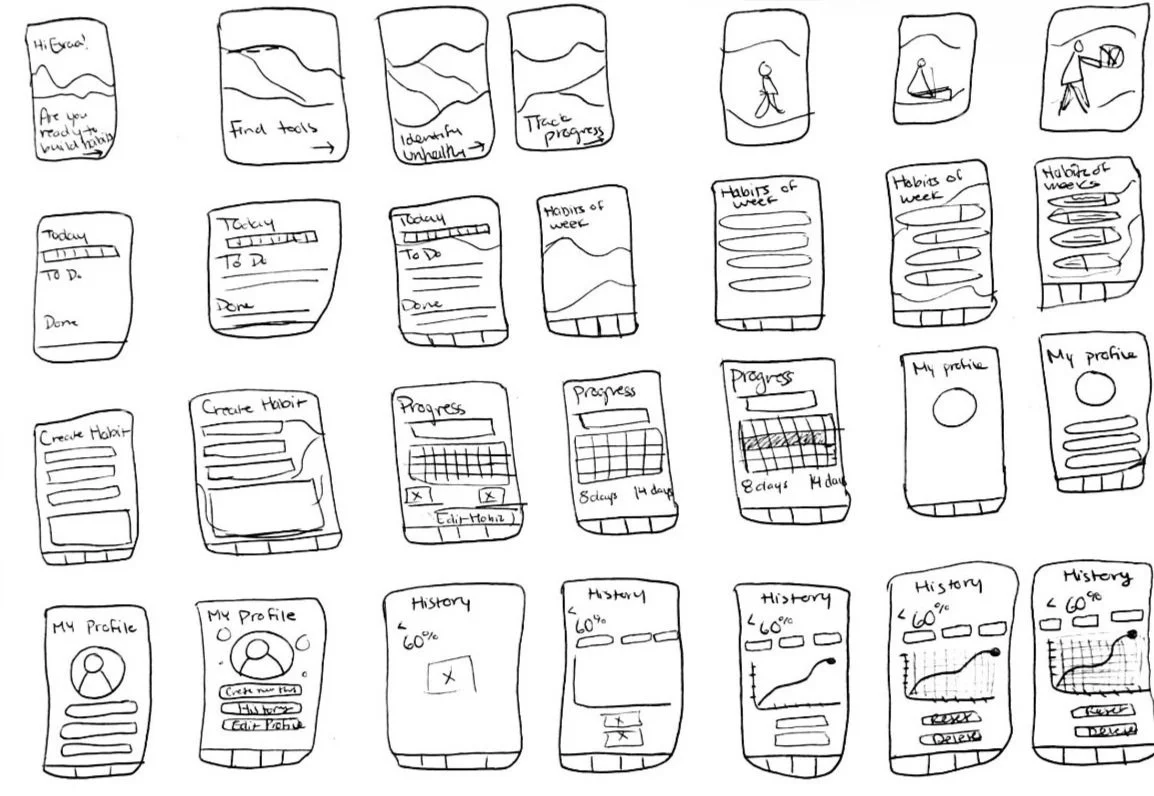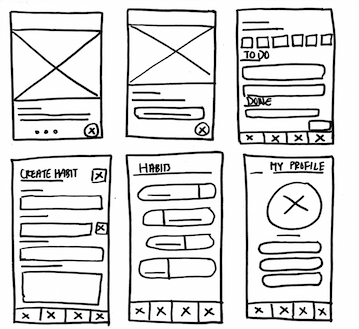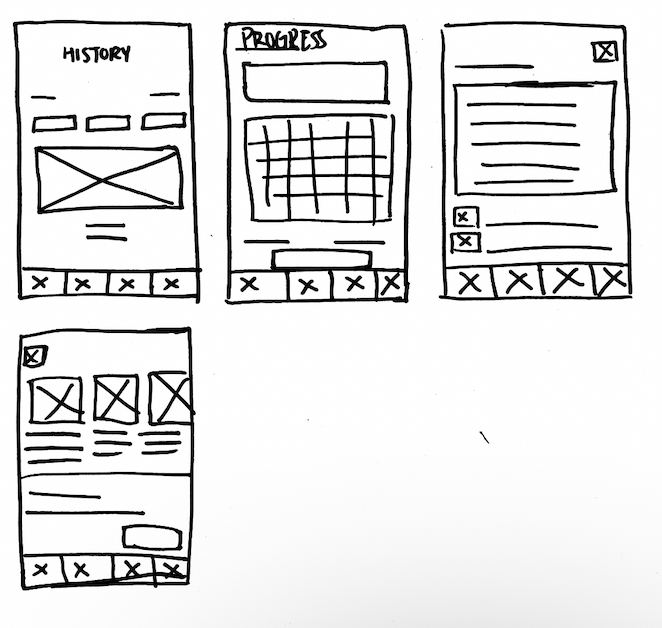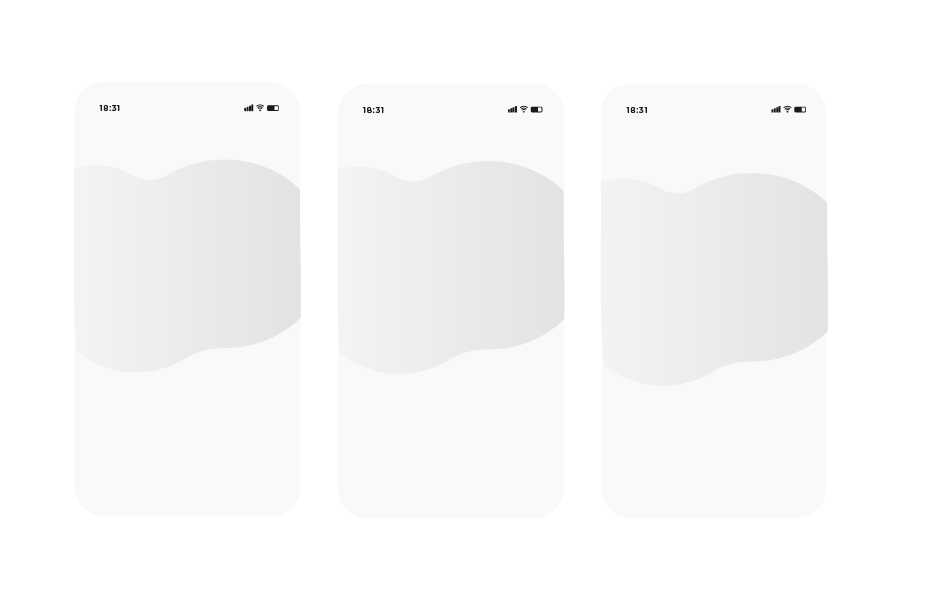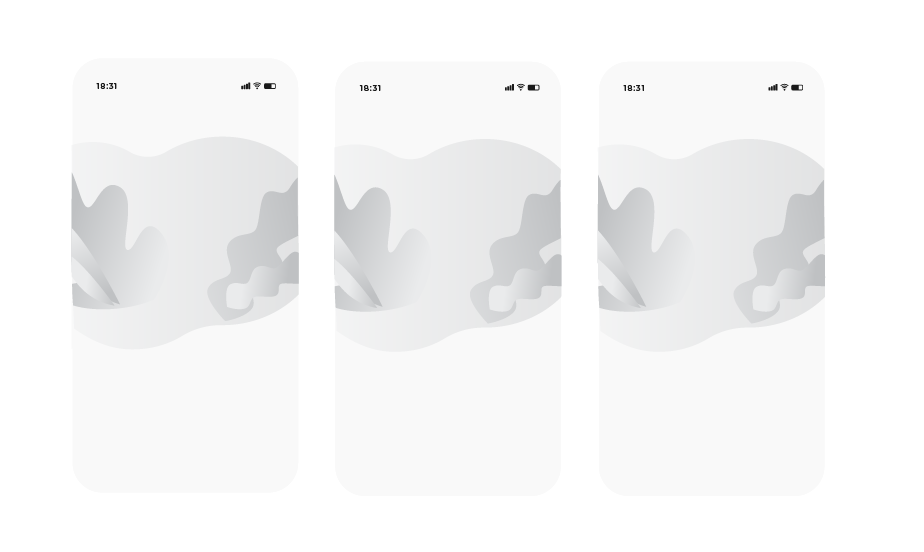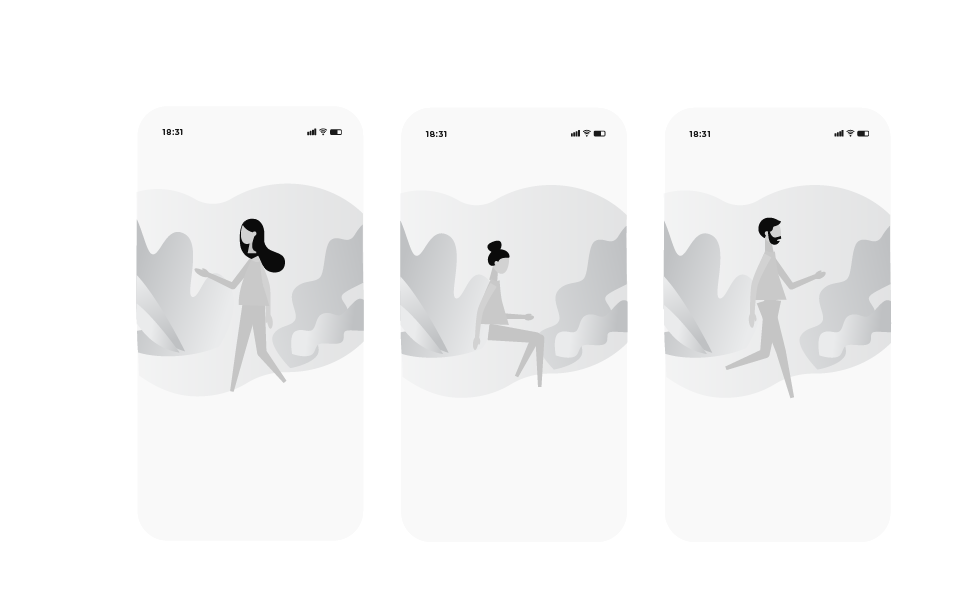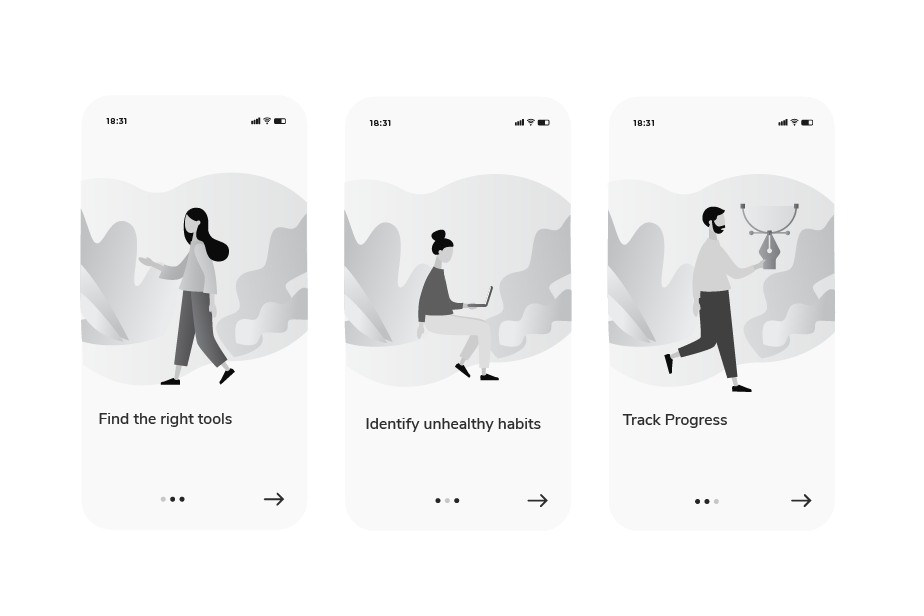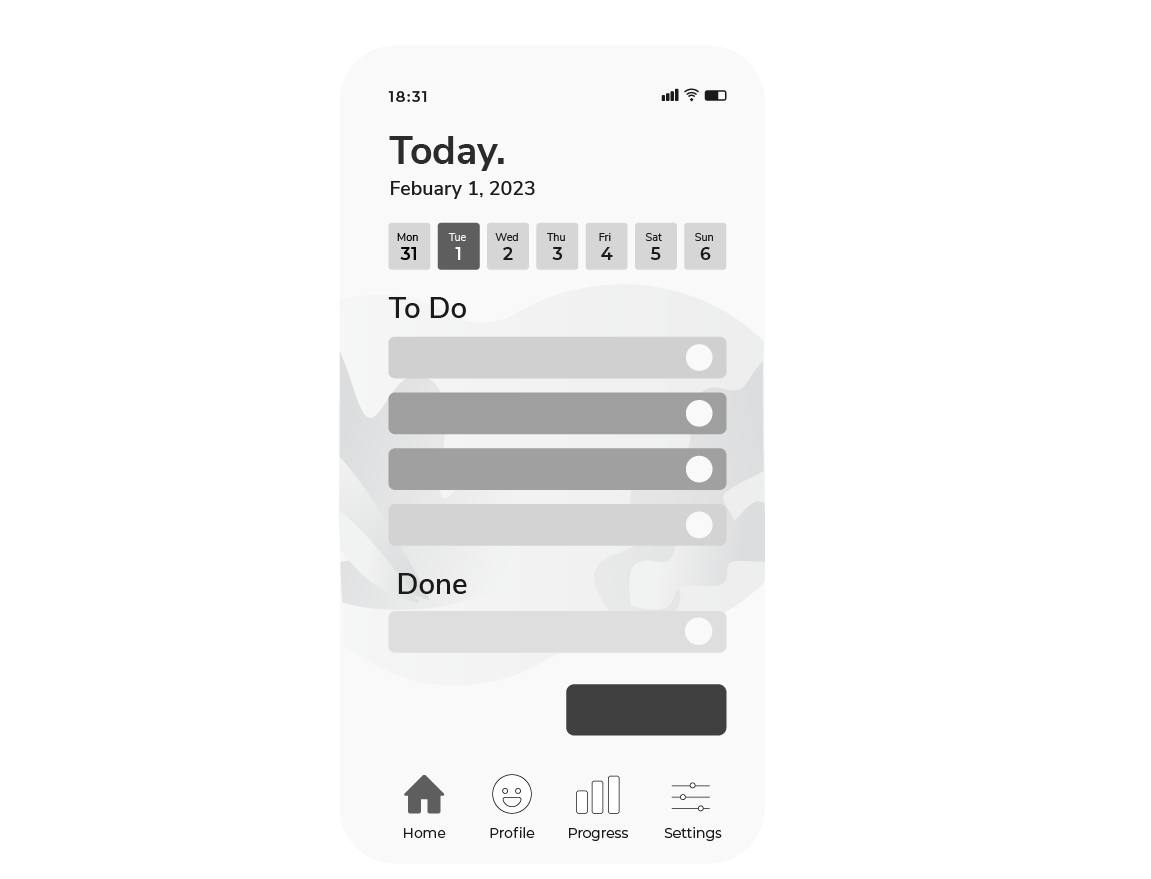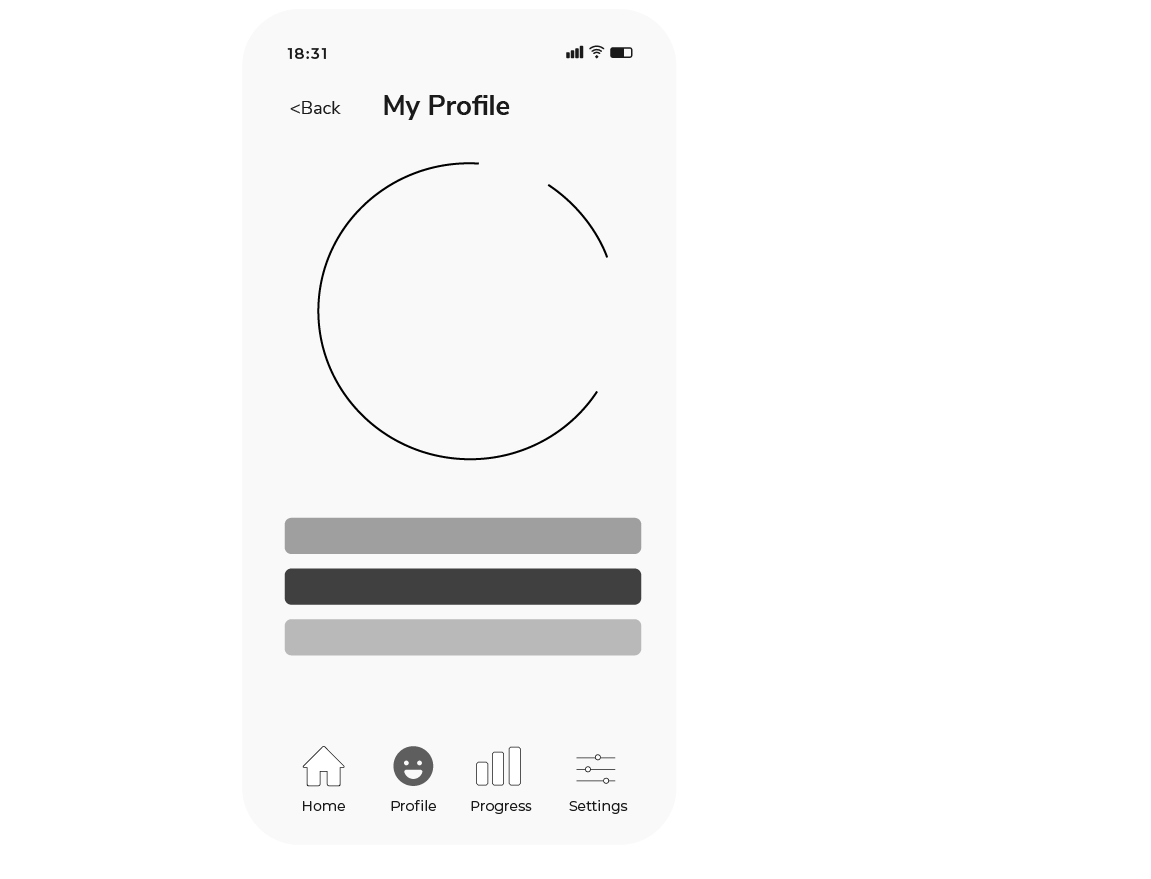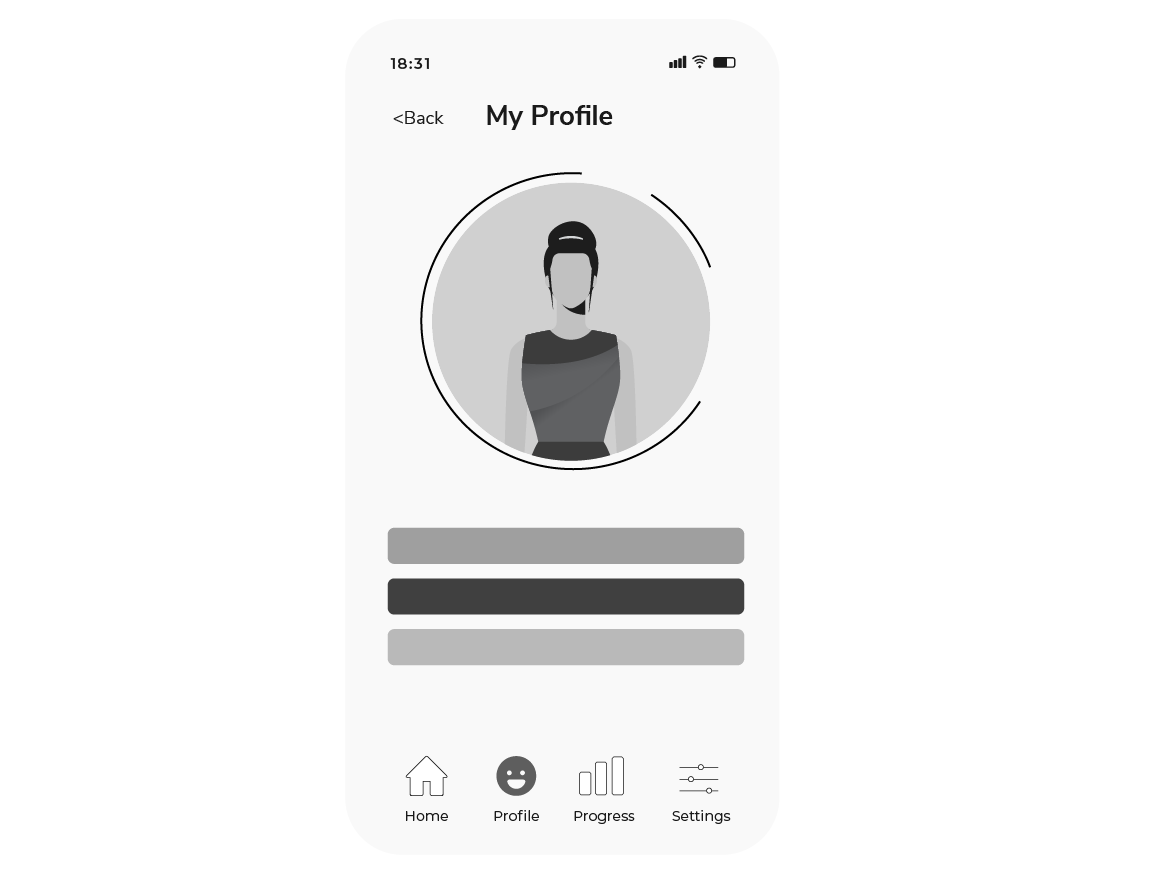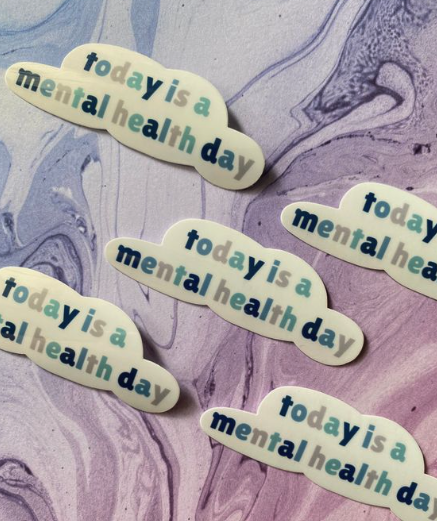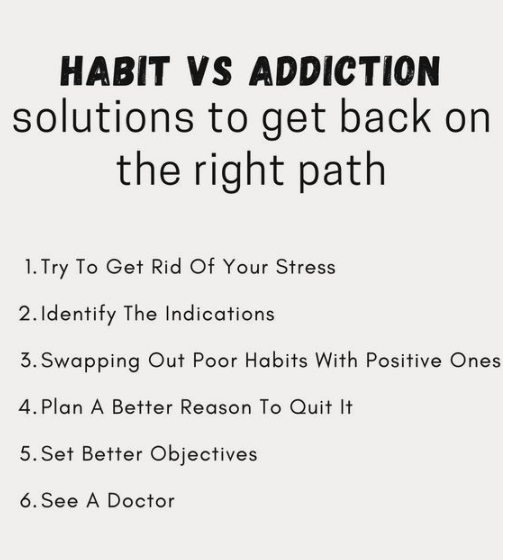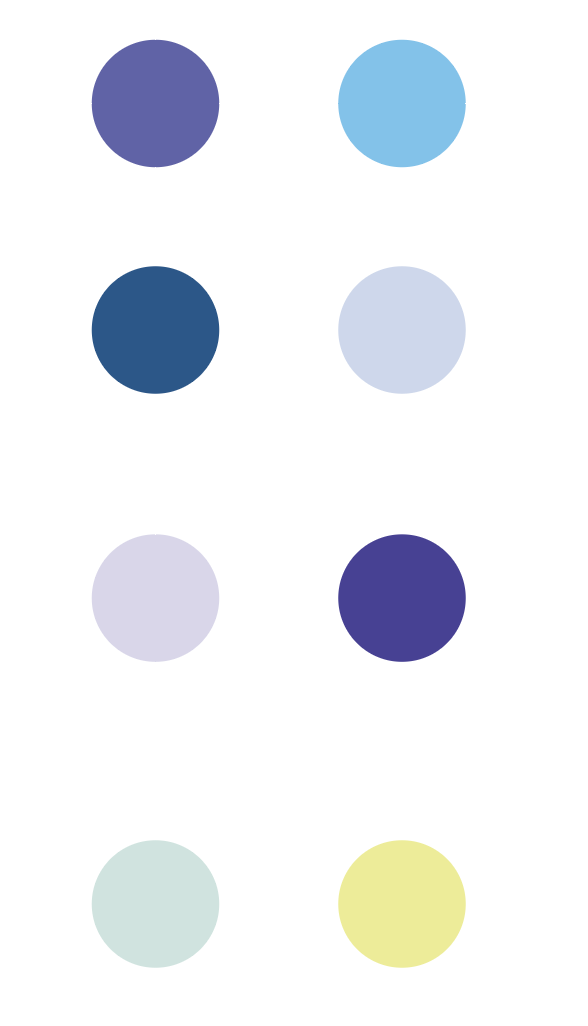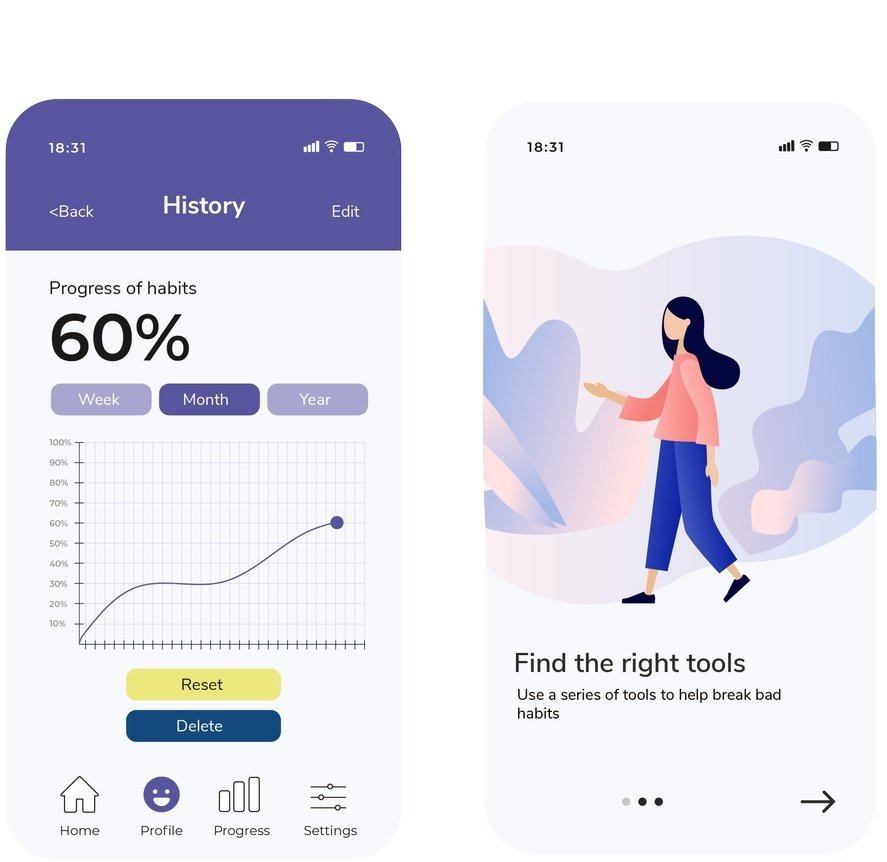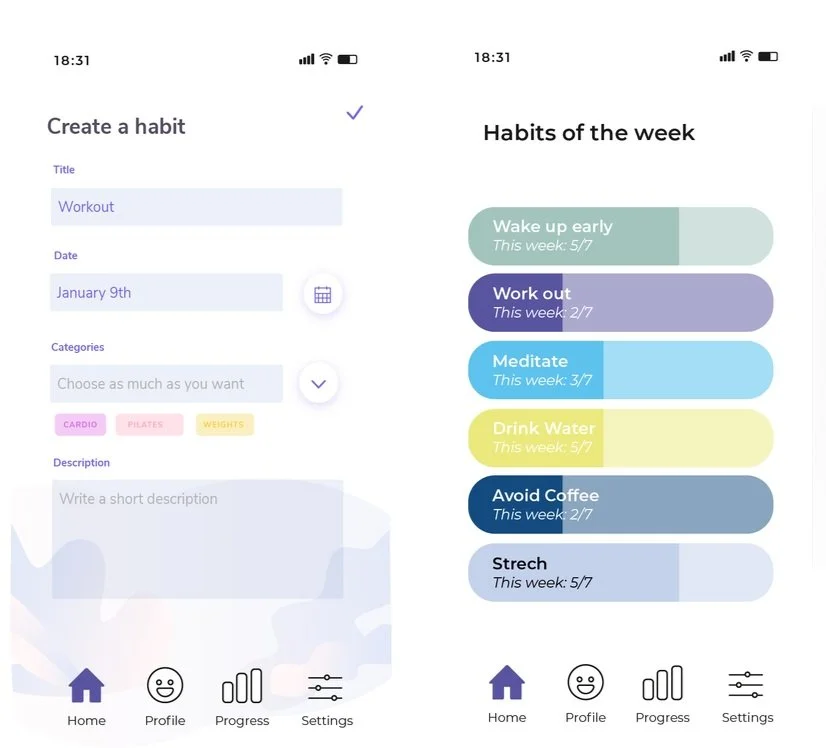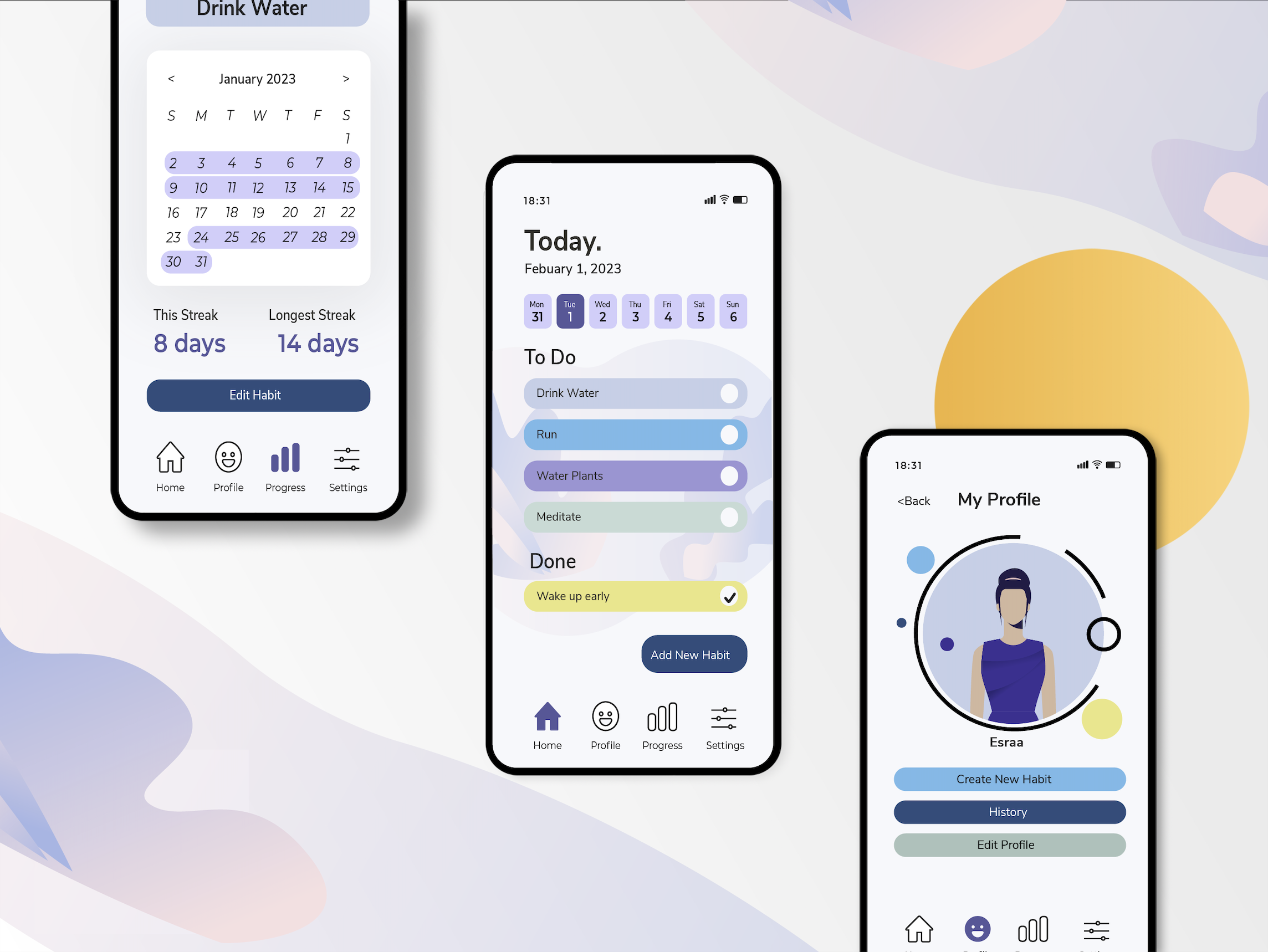
INCREMENTUM
Your personal habit tracker
In an age where technology has allowed people to accomplish many daily tasks, there is little support for breaking poor habits. Research shows 61% of Americans are trying to break unhealthy habits developed during the coronavirus pandemic. Current solutions disregard a humanized approach.
What if there was an effective digital method for breaking unhealthy habits and prioritizing mental health?
Role - UX Designer, UI Designer, Frontend Developer
Duration - 8 weeks
Tools - Figma, Whimsical, Adobe Creative Suite, Jira
1.0 Research and Discovery
The Problem
Lack of Interactive Habit Trackers
There is little support for interactive habit tracking apps with an emphasis on mental health. How can we utilize technology to create a platform that presents a humanistic approach for users to effectively track?
Quantitative Surveys Identified User Needs and Pain Points
The surveys were completed via a google form. There were a total of 130 participants, mostly consisting of teenagers and college students. The interviews were completed in 30-minute intervals.
What I learned…
1.Mental Health Resources
Participants noticed that there is a general lack in mental health resources. Many are losing motivation and struggling to break bad habits.
3. Lack of Variety in Tools
Multiple participants reported a lack in tools to be able to properly log, track and replace unhealthy habits.
2.Robotic Responses
Several participants reported generic responses that made the app feel less user-friendly and welcoming falling into a loop.
4. Accessibility
Participants complained of difficult interfaces that were difficult to navigate. There was also little to no support for accessibility.
User Personas
Using my Research, I Created Three Personas Based on the Different Stages in Life.
Riley faces social pressures from school, family, and friends. She struggles with identity and dealing with her emotions. She is looking to learn about herself and manage her emotions to love herself and begin a new chapter.
Riley the Rebel
Ali is a college student who is still looking for what his purpose is. He struggles balancing school and work and making decisions. He is looking to plan and organize to be able to properly time manage.
Ali the Adventurer
Whitney the Worker
Whitney is a corporate worker who feels stress at work. She struggles with high stress and pressure from her workplace and doesn’t know how to relieve stress. She wants to find a productive outlet for stress release and finding activities to be able to balance that pressure she feels at work.
Developing empathy with users
Creating a journey map revealed emotional nuances of different points of interaction that could be addressed in the habit tracking path. How information is presented and how paths are defined could make a difference in whether users abandoned tracking habits and emotions, while also keeping up to date with upcoming deadlines.
Problem Statements
Using my Research and Personas, I created two problem statements to summarize user pain points.
Riley is a busy highschool student who needs a way to manage her tasks and mental health because she is overwhelmed and struggles with her identity.
Whitney is a working professional who needs a productive outlet to manage her stress because she is feeling highly stressed and pressured at work.
Project Goals
What did I want to accomplish with this project?
Companionship
Interviewees felt alone and lack of support in their journey’s to self improvement. Therefore I wanted to allow for an experience which prioritized mental health support and a welcoming interface.
Convenience
I wanted to allow for an easy to navigate design, that has features that users are able to properly locate.
Variety in Resources
I wanted to make sure there were a number of resources and tools for users to be able to track and break unhealthy habits while also replacing them with new health habits.
2.0 Design
Creating Structure
This site map, informed by surveys and interviews, organizationally depicts the three key streams that the prototype would focus on:
Bringing the solution to life
An Interactive Application that Brings a Humanistic Approach by Prioritizing Mental Health and Provides a Variety of Tools to Successfully Break and Replace Bad Habits.
My solution focuses on creating a unique experience for each user. For the older generation, I made sure the design worked well for large screens and was easily readable. For the younger generation, a similar experience would be present on their smartphones.
Visualizing a User-Centric Experience With Wireframing
By exploring page organization through sketching, I learned that the best way forward was to keep logged habits in clearly organized modules. This exercise was important in discovering which existing design patterns from common habit tracking apps in the competitive landscape, would need to carry over into incrementum to ensure a user friendly experience.
Rapid Prototyping
I created Several Iterations of low fidelity prototypes.
Understanding What Users Find Intuitive, and Why
Low-fidelity prototype testing allowed me to better understand how users expected to complete logging habits. By studying their touch and swipe gestures — and more importantly, having a dialogue with them about what they expected and when — I knew which adjustments needed to be made to lay the foundation for a more fully realized high fidelity prototype.
Visual Design System
I focused on creating a friendly and welcoming feeling.
Initially inspired by Pinterest and Dribbble, the project aimed for an aesthetic design but faced navigation challenges. After several iterations, a deep purple/blue palette was chosen to evoke emotional connections related to spirituality, compassion, and support. Sage and yellow accents were added to highlight visual elements.
Type and Color
As mentioned previously, I decided to go with a deep purple/blue color palette as it best represented that friendly and sincere feeling while simultaneously giving a strong structure to motivate and stay committed.
I chose the Nunito Sans serif font. This font is thin but uniform making it work well for a body type. This is needed for readability and easy use to navigate through the app and be able to properly log and journal.
1. Simplify and streamline app design, emphasizing clarity.
2. Create a thorough onboarding experience with interactive tutorials.
3. Offer customization options for themes, reminders, and habit recommendations.
4. Enable goal setting and progress tracking with visual aids.
5. Incorporate social features for community engagement and support.
How Usability Might Be Improved
Issues to Address for Longer-Term Development

Lessons learned
1. I initially thought the app would only track habits, but I quickly realized that users needed guidance on habit tracking.
2. While the app was designed for mental health, it lacked additional resources. Including mental health articles, videos, and guided meditations within the app can alleviate user anxieties and increase its value as a mental health support tool.
3. Users prefer more filtering options when searching for content to watch, as everyone has different preferences.
4. For an app focused on habit tracking and mental health, inclusivity is crucial. Future updates should prioritize accessibility, with features like voice commands, larger text options, and color contrast settings to ensure all users, including those with disabilities, can use the app.
